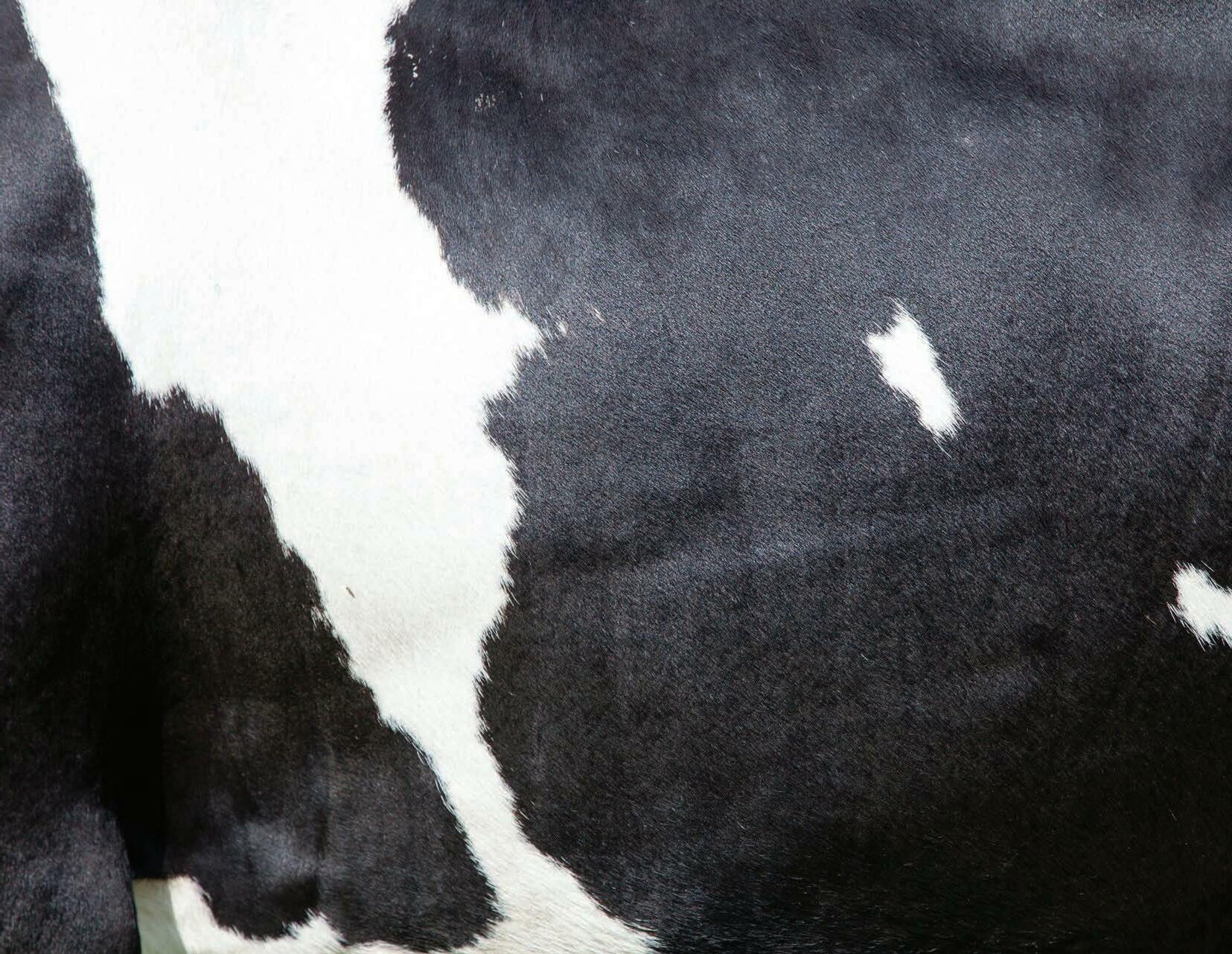
7 minute read
Dairy
DAIRY
(resource 34, 35, 36, 37)
Advertisement
Key Highlights
Dairy markets saw more volatility than any major commodity in 2020; prices for class III milk observed both 5-year lows and highs over a span of one month.
Government food box programs provided a critical support for dairy in 2020; food box programs purchased more than $1 billion in dairy products.
Dairy subcomponents, like butter, will continue to be soft until restaurant activity recovers in the second half of 2021, though high stocks may delay that recovery.
Few commodities saw as much volatility as dairy did through 2020. Dairy producers came into 2020 with high expectations after several important trade agreements and increased export opportunities. The burgeoning pandemic came to represent an existential risk, as dairy use in restaurants plummeted overnight and spot prices fell well below breakeven measures. Yet producers ended the year bullishly: USDA NASS found that producers increased their number of milk cows through the second half of 2020, and the USDA’s Economic Research Service forecasts that 2020 incomes for dairy producers were their highest since 2014.
One critical component of this volatility was the USDA’s Farmers to Families Food Box program. Of the round one contracts awarded, more than a quarter of the value was specifically for dairy products. This implies that of the $4.5 billion allotted for food box purchases, more than a billion dollars were expressly for dairy purchases. This represents a meaningful amount of the estimated $40 billion dollars dairy producers earned in 2020.
These purchases may have obscured some weakness in different subcomponents of the dairy market. Since March, strong pizza purchases combined with government programs led to stable markets for some dairy solids. However, drops in restaurant demand have hammered butter prices, which remain well below prior-year values. While the Farmers to Families program did have an impact on these markets, it is likely that a full recovery in the butter market will not occur until the service sector fully comes online, probably in the second half of 2021. Even then, high butter cold storage stocks may take months to come down to more normal levels.
Until the service sector can fully recover, the dairy sector remains susceptible to these severe price swings. As the USDA expended its initial $4.5 billion in emergency food purchases, futures for class III milk fell from high profit territory to below breakeven levels. The week Congress passed its December relief bill that included an additional $1.5 billion for purchases, prices immediately rebounded. That bill included an additional $400 million to pay for milk that would be processed and donated to nonprofit entities. While dairy producers may receive less total aid in 2021, these payments are a helpful stopgap until restaurant activity fully recovers.
Dairy producers faced more uncertainty than almost any sector in 2021, but have ended on a high note. This came from a combination of strong consumer demand for certain milk products, like liquid milk and pizzas, but was also contingent on strong government support. Producers are entering 2021 with more productive capacity even as restaurant activity continues to be well below prior year levels. While futures appear healthy through the first half of 2021, longer-term health may depend on the strength of restaurant recovery in the back half of the year.
Figure 13: Index of WASDE Cheese and Butter Prices, January 2020 – December 2020 Figure 13: Index of WASDE Cheese and Butter Prices, January 2020 – December 2020
1.4
Price Index (January = 1) 1.3
1.2
1.1
1
0.9
0.8
0.7
0.6 CARES Act Signed Cheese Butter
Source: USDA OCE World Agricultural Supply and Demand Estimates
Seed, The Feed and Field - Winter I Spring 2021 22
RESOURCES
The information and opinions or conclusions contained herein have been compiled or arrived at from the following sources and references: 1 U.S. House of Representatives Archives (https://history.house.gov/Institution/Party-Divisions/Party-Divisions/) 2 U.S. Senate Archives (https://www.senate.gov/history/partydiv.htm) 3 Center for Responsive Politics (https://www.opensecrets.org/elections-overview/cost-of-election) 4 USDA ERS Farm Income and Wealth Statistics (https://www.ers.usda.gov/data-products/farm-income-and-wealth-statistics/) 5 Iowa State Extension Ag DecisionMaker. Brazilian Soybeans – Transportation Problems. November 2000. (https://www.extension.iastate.edu/agdm/) 6 Federal Reserve Bank of St. Louis, FRED Database (https://fred.stlouisfed.org/series/DGS10) 7 USDA AMS Soybean Transportation Guide: Brazil (https://www.ams.usda.gov/services/transportation-analysis/soybean-brazil) 8 CNN. Brazil falls deep into recession. August 28, 2015. (https://money.cnn.com/2015/08/28/news/economy/brazil-recession/) 9 USDA ERS. (https://www.ers.usda.gov/data-products/ag-and-food-statistics-charting-the-essentials/agricultural-trade/) 10 USDA AMS. (https://www.ams.usda.gov/sites/default/files/media/AReliableWaterwaySystemisImportanttoAgriculture10312018.pdf) 11 USDA ERS. (https://www.ers.usda.gov/data-products/ag-and-food-statistics-charting-the-essentials/agricultural-production-and-prices/) 12 National Conference of State Legislatures. (https://www.ncsl.org/Portals/1/Documents/statefed/Summary-of-HR-133-Appropriations-Provisions.pdf) 13 Federal Communications Commission. Auction 904: Rural Digital Opportunity Fund. (https://www.fcc.gov/auction/904) 14 USDA. (https://www.usda.gov/media/press-releases/2018/01/08/secretary-perdue-presents-agriculture-and-rural-prosperity-task) 15 EIA. Average U.S. construction costs for solar and wind generation. (https://www.eia.gov/todayinenergy/detail.php?id=45136#) 16 North Carolina State Cooperative Extension. Considerations for Transferring Agricultural Land to Solar Panel Energy Production. (https://www.eia.gov/todayinenergy/detail.php?id=45136#) 17 U.S. Department of Energy. Benefits of Agrivoltaics Across the Food-Energy-Water Nexus. (https://www.nrel.gov/news/program/2019/benefits-of-agrivoltaics-across-the-food-energy-water-nexus.html) 18 University of Minnesota. Agrivoltaics to Share Cows. (https://wcroc.cfans.umn.edu/research-programs/dairy/outreach/agrivoltaics#:~:text=Agrivoltaics%20is%20one%20way%20producers,and%20 health%20in%20dairy%20cows.) 19 MDPI Environments. Solar Sharing for Both Food and Clean Energy Production: Performance of Agrivoltaic Systems for Corn, a Typical Shade-Intolerant Crop. 20 New York Times (https://www.nytimes.com/2020/12/06/us/christmas-tree-sales-boom.html) 21 USDA Agricultural Marketing Service Daily National Turkey Market At-A-Glance (https://mymarketnews.ams.usda.gov/filerepo/sites/default/files/2856/2020-11-13/350557/ams_2856_00185.txt) 22 USDA Agricultural Marketing Service National Daily Hog Summary (https://mymarketnews.ams.usda.gov/filerepo/sites/default/files/2872/2021-01-11/406070/ams_2872_00222.pdf) 23 USDA Agricultural Marketing Service Terminal Market Reports (https://www.marketnews.usda.gov/mnp/fv-home/) 24 Google Trends (https://www.google.com/trends) 25 American Farm Bureau Federation Thanksgiving Dinner Cost Survey (https://www.fb.org/files/2020-Year-to-Year-Prices-AFBF-Thanksgiving-Dinner-Cost_Survey.pdf) 26 National Confectioners Association (https://candyusa.com/news/making-room-for-creativity-this-winter-holiday-season/) 27 USDA Economic Research Service Feed Outlooks (https://www.ers.usda.gov/publications/pub-details/?pubid=100045) 28 USDA Economic Research Service Oil Crops Outlooks (https://www.ers.usda.gov/publications/pub-details/?pubid=100034) 29 USDA Foreign Agricultural Service Weekly Export Sales Reports (https://apps.fas.usda.gov/export-sales/esrd1.html) 30 USDA World Agricultural Outlook Board WASDE Reports (https://www.usda.gov/oce/commodity/wasde) 31 CME Corn and Soybean Futures Contract Prices (https://www.cmegroup.com/trading/agricultural/grain-and-oilseed.html) 32 NOAA, U.S. Seasonal Drought Outlook. (https://www.cpc.ncep.noaa.gov/products/expert_assessment/sdo_summary.php) 33 University of Nebraska-Lincoln, U.S. Drought Monitor Change Maps. (https://droughtmonitor.unl.edu/Maps/ChangeMaps.aspx) 34 USDA Farmers to Families Food Box Program Overview (https://www.ams.usda.gov/selling-food-to-usda/farmers-to-families-food-box) 35 USDA NASS December Milk Production Report (https://downloads.usda.library.cornell.edu/usda-esmis/files/h989r321c/q524kf13h/ws85b748b/mkpr1220.pdf) 36 USDA ERS Farm Income and Wealth Statistics (https://data.ers.usda.gov/reports.aspx?ID=17840) 37 USDA AMS Dairy Market News Weekly Report (https://mymarketnews.ams.usda.gov/filerepo/sites/default/files/2998/2021-01-08/405262/ams_2998_00046.pdf)

23 Seed, The Feed and Field - Winter I Spring 2021
Lead Author - Jackson Takach, Chief Economist, is a Kentucky native whose strong ties to agriculture began while growing up in the small farming town of Scottsville. He has since dedicated a career to agricultural finance where he can combine his passion for rural America with his natural curiosity of the world and his strong (and perhaps unrealistic) desire to explain how we interact within it. He joined the Farmer Mac team in 2005, and has worked in the research, credit, and underwriting departments. Today, his focus at Farmer Mac currently includes quantitative analysis of credit, interest rate, and other marketbased risks, as well as monitoring conditions of the agricultural economy, operational information systems analysis, and statistical programming. He holds a Bachelor’s degree in economics from Centre College, a Master’s degree in agricultural economics from Purdue University, and a Master’s of Business Administration from Indiana University’s Kelley School of Business. He has also been a CFA Charterholder since 2012.

Lead Author - Greg Lyons is an economist who joined the Farmer Mac team in 2019. Prior to joining Farmer Mac, Greg was an economist with the USDA, Economic Research Service, where he created estimates of farm sector income and researched topics related to agricultural finance, beginning farmers and farm households. Greg’s interest in rural America stems from his time growing up in upstate New York, where he spent many hours on his family’s dairy farm. At Farmer Mac, he spends most of his time researching topics related to credit access, land values, and farm financial conditions. Greg has a bachelor’s degree in Policy Analysis and Management from Cornell University, and a Master’s of Public Policy degree from Georgetown University. Contributing Author - Brian Brinch joined Farmer Mac in 2000 as a Financial Research Associate. Since then, he has held various roles within the company and currently serves as Senior Vice President – Rural Infrastructure, where he is the business unit head of the company’s rural infrastructure division. Brian continues to follow agricultural and rural utility industry trends and risks as he regularly contributes to the company’s stress testing and strategic planning processes. Brian received both his undergraduate degree in meteorology and his master’s in Agriculture and Applied Economics from Penn State University. He is a CFA Charterholder and FRM Certified.
Guest Author - Charles Brettell is the Managing Partner of The Prosody Group and leads the firm’s management consulting practice under Prosody Consulting, LLC. Charles’s 20-plus years of experience includes extensive work in all facets of development, deal making and integration, with a concentration in power and agriculture. He is a graduate of the University of Kansas School of Law, and holds an LLM in tax from the University of Missouri Kansas City. He resides in Kansas City.
Guest Author - Joe Brettell serves as Partner at Prosody Group where he runs the firm’s strategic communications and advocacy practice, with more than 15 years of experience in utilizing traditional and innovative public affairs and media relations skills to help Fortune 500 companies, political campaigns and prominent interest groups execute their strategic goals. Prior to launching the strategic communications practice, he served as head of external relations for Apache Corporation, as has also served as Senior Vice President at Fleishman Hillard where he oversaw clients across the energy, agriculture and manufacturing spectrum. Joe resides in Houston. Riley Croghan, Editor-in-Chief Betsy Urso, Copy Editor & Design
Seed, The Feed and Field - Winter I Spring 2021 24








